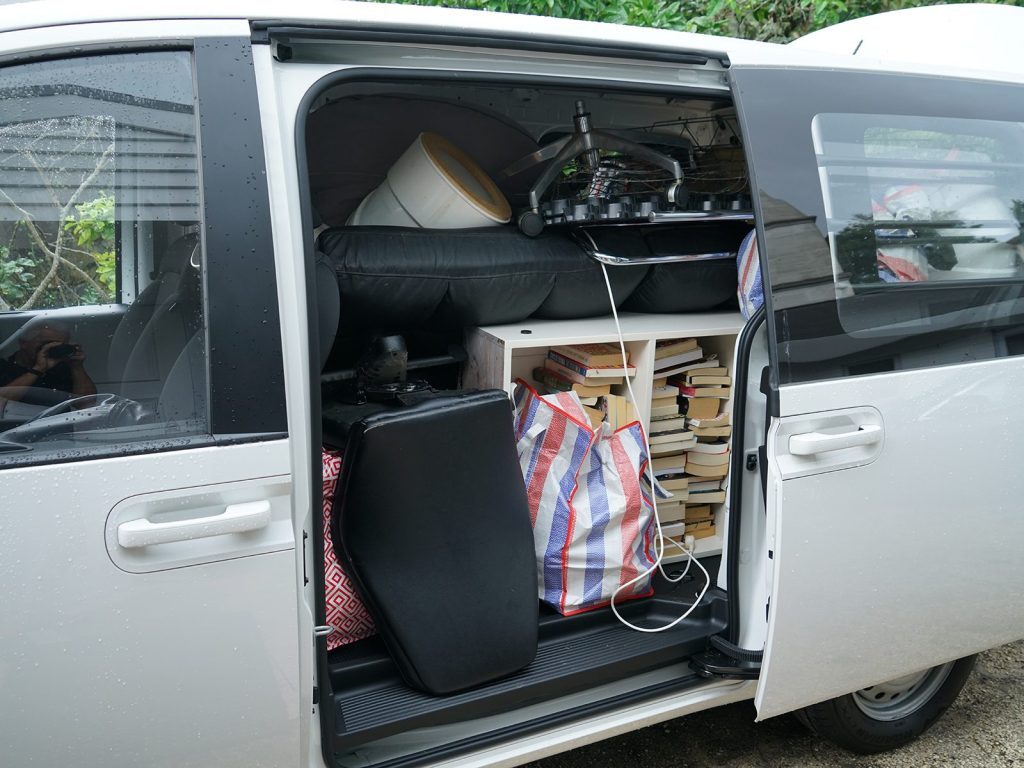Closely related to the Staria MPV, the Staria Load is a bold new take on the commercial van. And it drives like the wind.
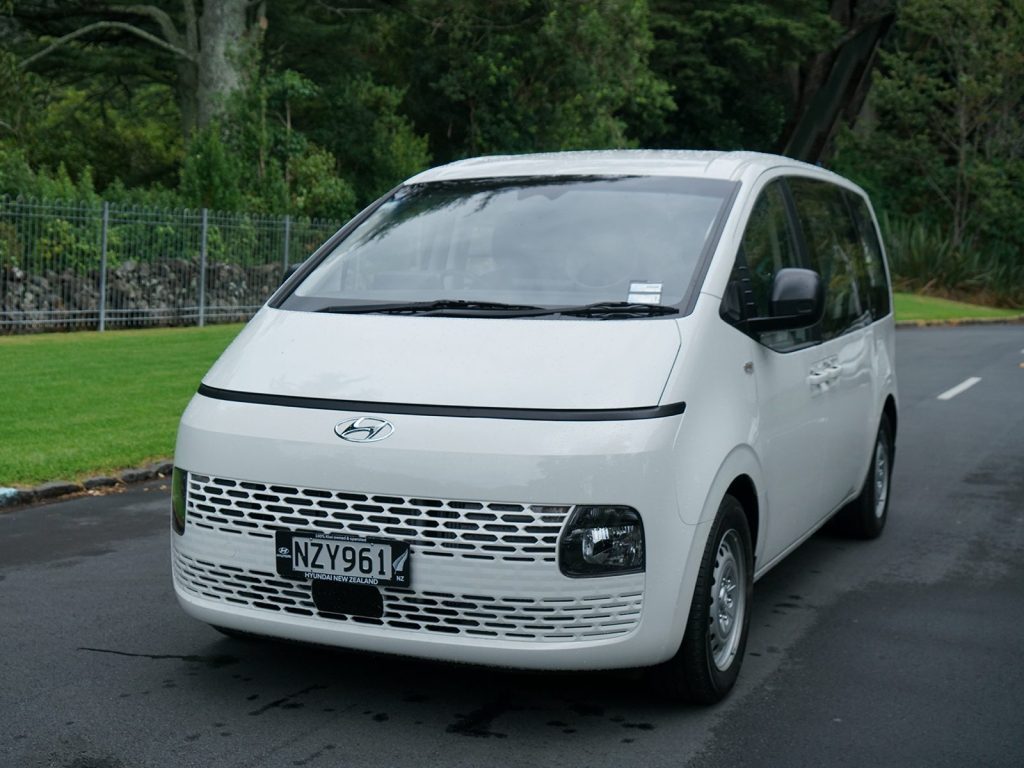
Following a property sale last year, we came to understand what a good thing a large van can be, the biggest Transit Cargo swallowing the remaining gear we hadn’t chucked out after 27 years of bach ownership. Its 10-speed auto was a revelation too, getting the best out of the diesel powertrain.
Next up, we had the opportunity to check out LDV’s new eDeliver3, a pure electric compact van that genuinely surprised with its performance, range and cargo capacity. I guess 4.8m3 doesn’t seem a whole lot compared with the almost 10 cubic metres of the tallest Transit, but we managed to squeeze in a three-seater couch and kitchen table that ended up being ‘recycled’, along with a whole lot of other gear that fitted in around those. It cruises at 100km/h no problem at all, has decent enough range per charge (240km combined, 340km urban) and has surprisingly good handling to boot. It’s not the last word in comfort or component quality but at the on-road price of $58,500, who’s complaining?
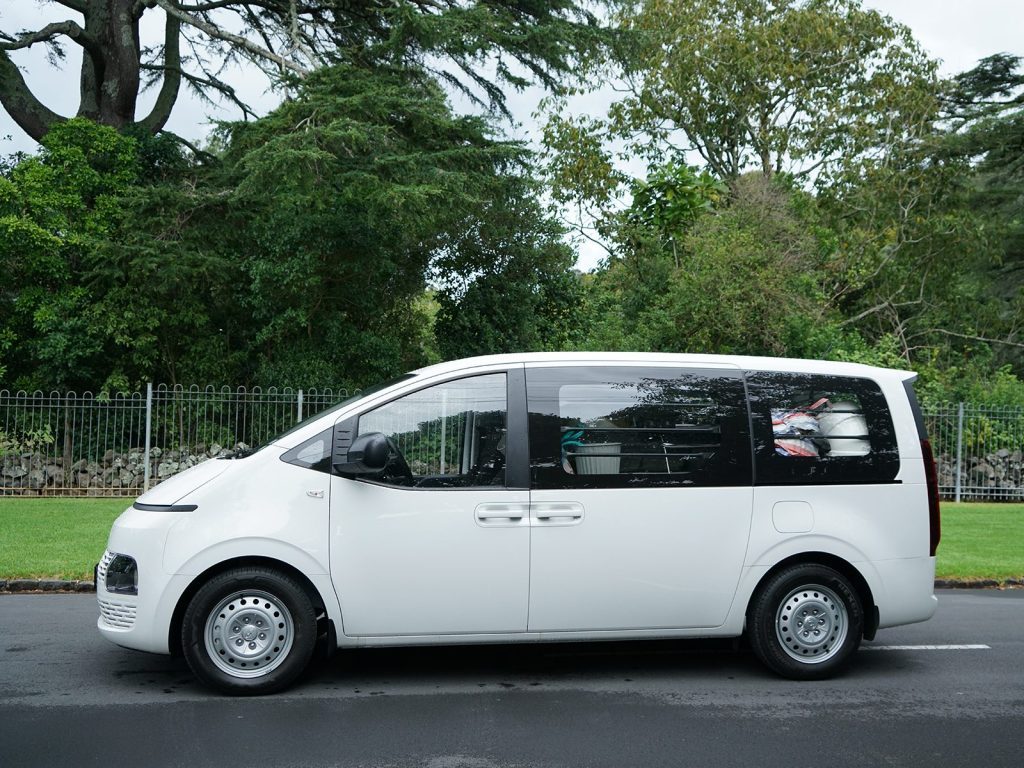
In between these for both size (5.2m long by 2m wide and tall) and price is the new Staria Load by Hyundai, the iLoad replacement. With its 2.2L CRDi turbodiesel and eight-speed automatic in two-seater guise it comes in at $62,990. You can go for a six-speed manual version if you want, and that costs $59,990 but the turbodiesel works beautifully with the automatic, especially for mainly urban use. It has various drive modes too, but just stick it in Smart and leave it there. Out on the open road the eight-speed auto is a cracker of a transmission, silky smooth and responsive. It’s worth the extra $3k we’d suggest.
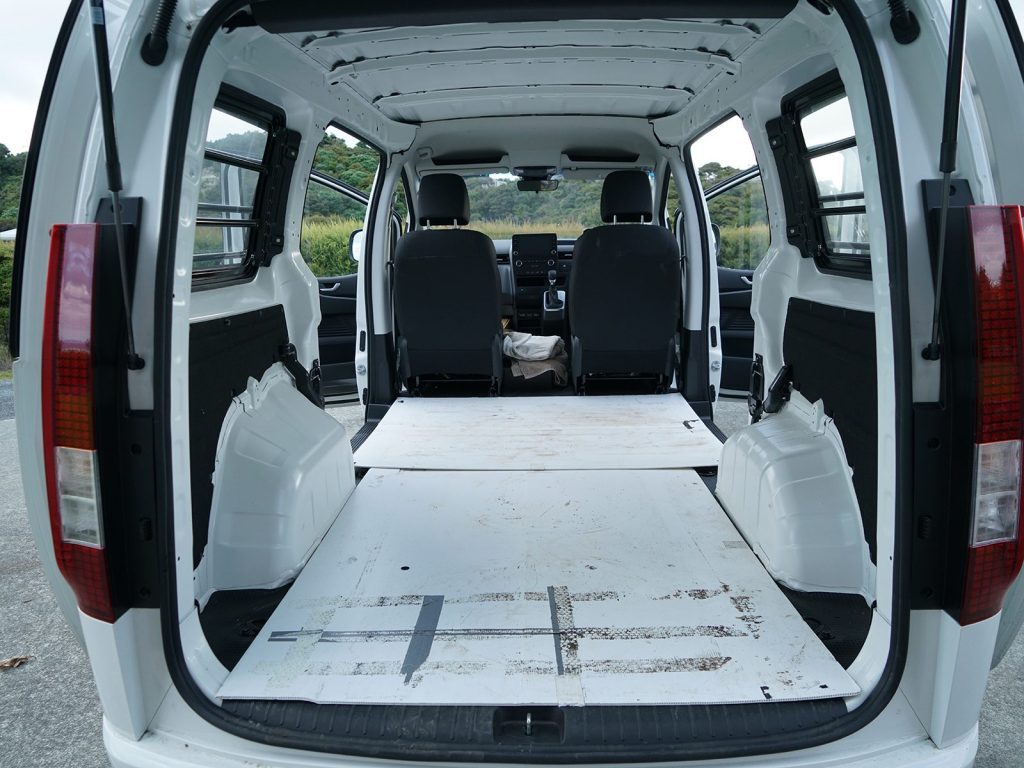
As to the rest of the package? It’s stupid good, if you want it encapsulated in a couple of words. The looks are modern in a sci-fi way, with low set LEDs and wide, body coloured grille, but then this is a brand new vehicle and Hyundai is in a phase of modern design aesthetics. We really like the size of this vehicle. Where the monster vans are just a bit much to helm in town, and you’re forever worrying about what they won’t fit under, the taller examples at any rate, this is sort of in the habitable Goldilocks zone, using exoplanet terminology, for both town and country running.
It feels modern too, with its starry and ideally placed instrument cluster – no head-up display needed here – and well built with quality plastics. Then once on the motorway, whoa, this can tramp. Few of the bigger diesel vans can get to 100 in 10sec. This can, which makes it overtake ready as well.
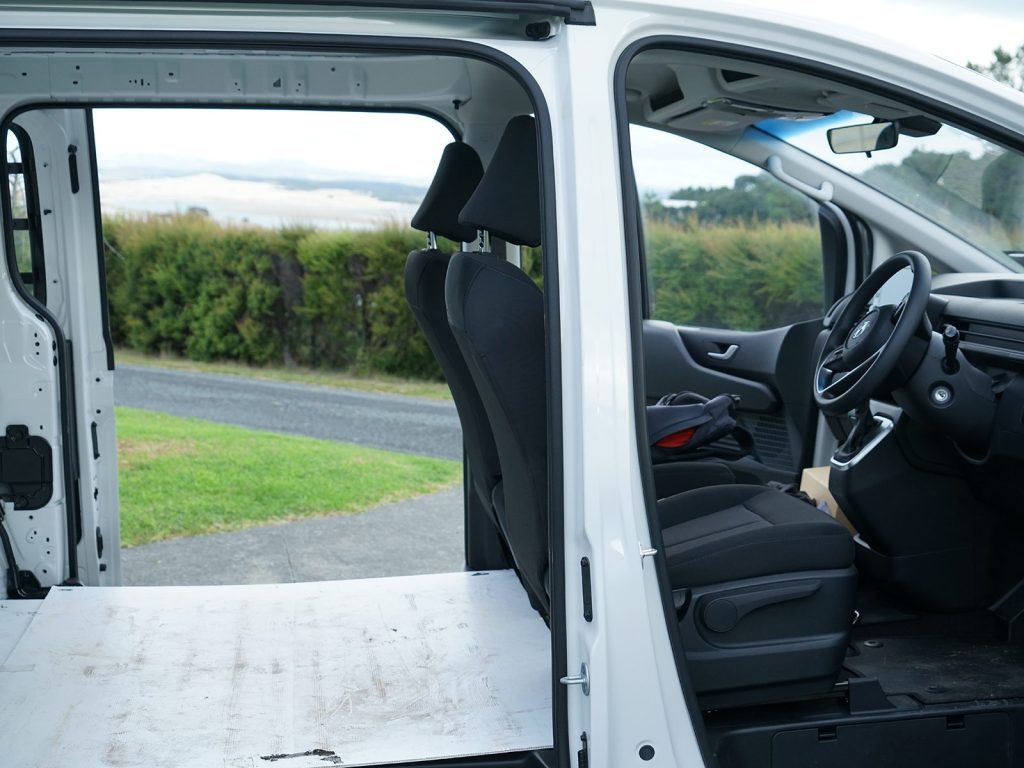
Times like this are not really a great indication of how well this can get along in the everyday grind. On the trip back from new digs at Mangawhai to Auckland and with nothing aboard, we thought the handling inspirational enough to tackle SH16 rather than the not-always-quicker-but-always-clogged SH1. It shares the passenger vehicle platform of the Santa Fe, so small wonder we managed to keep pace with an XR6 that was taking no prisoners. On corners rated 55, this would round ‘em up at 100. It’s relaxed too, 100km/h bringing up an even 1500rpm in eighth. That’s why we saw fuel use in the sevens, regardless of whether laden or not. Naturally we weren’t travelling as quickly with a load.
But even the steering feels lively. More amazing still is its unladen ride quality, the best of the bunch that I’ve sampled, no question.
So overall this feels more car-like to drive than any other van I’ve ever sampled. Laden, it is just as smooth.
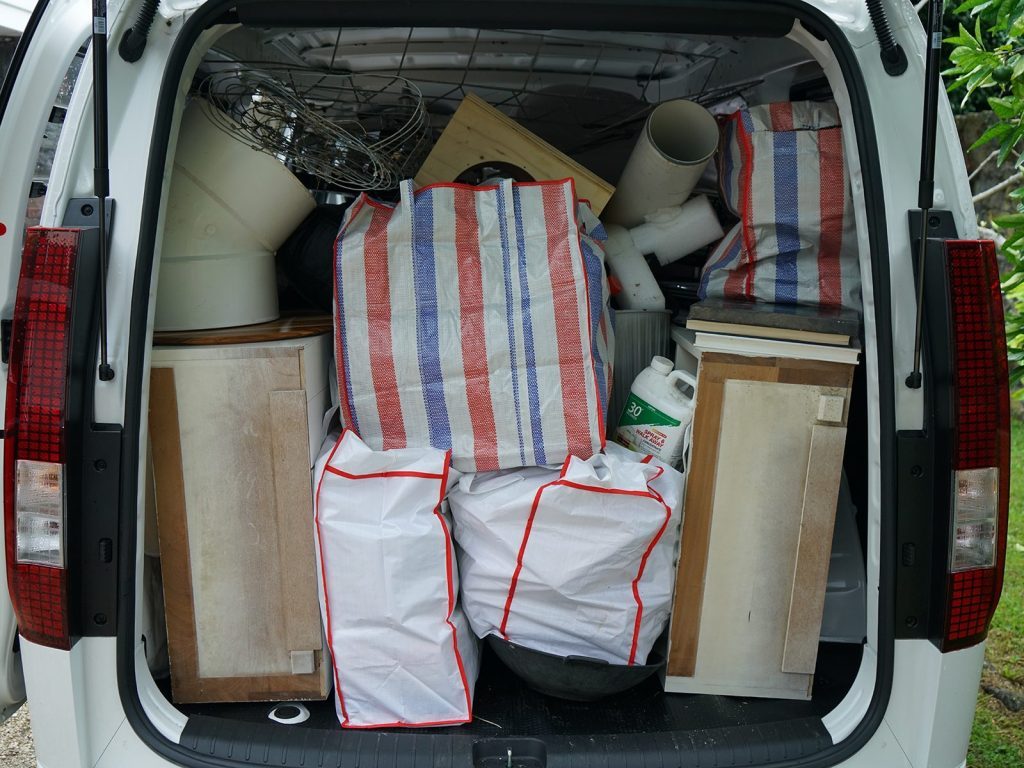
And you’d not believe how much stuff you can cram into this load lugger. Hyundai reckons almost 5000L or 5 cubic metres but that seems conservative. It’s probably closer to 6m3, while the maximum payload is 1070kg. We had some gear for recycling, like a couple of old book cases, along with most of the books, and sundry other chuck outs. Full to the brim it still only came to about 500kg. The other load was headed north and consisted mainly of three half-round wine barrels and three big planters, the former with soil and citrus, the latter without.
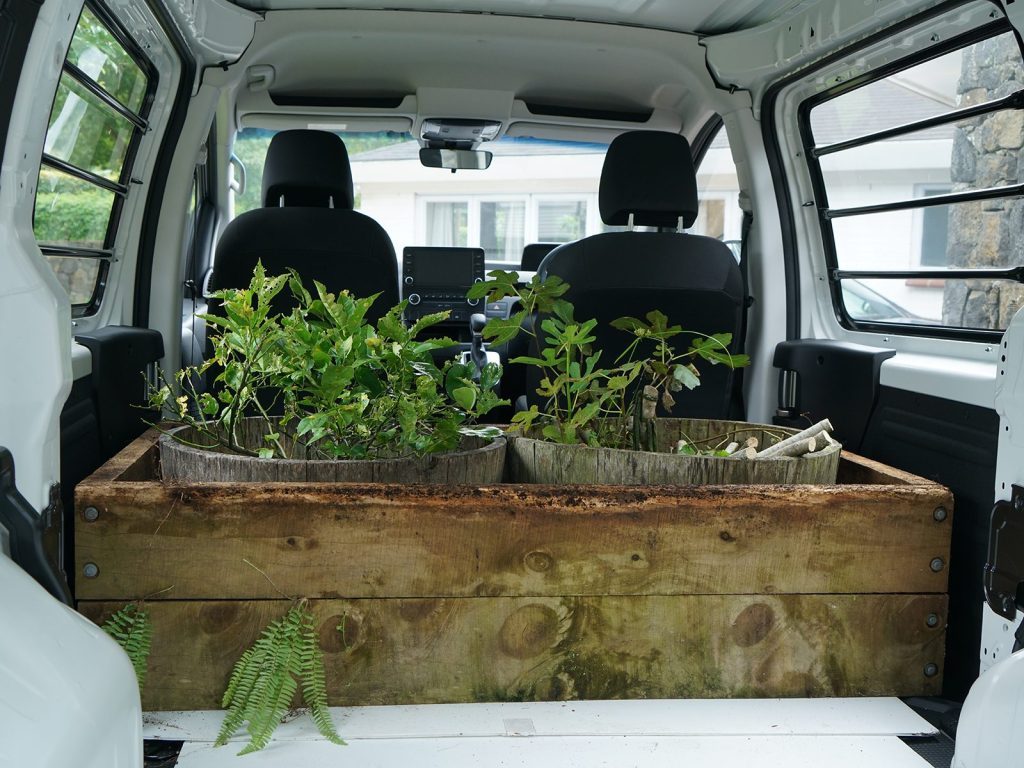
Two of the planter boxes were 1.6m long, the other 2m and all were 800mm wide. Get this – we installed the two 1.6m planters in crossways, one atop the other, between the two sliding doors. The 2m one we rested with one end atop the other two and the other just inside the rear door.
Quite by chance, the pair of wine barrels fitted perfectly within the two smaller planters. So it was then just a matter of stacking the remaining gear in around those, important stuff like amps and subwoofers which the SO didn’t notice and still hasn’t. Hyundai says this will swallow three European-sized pallets.
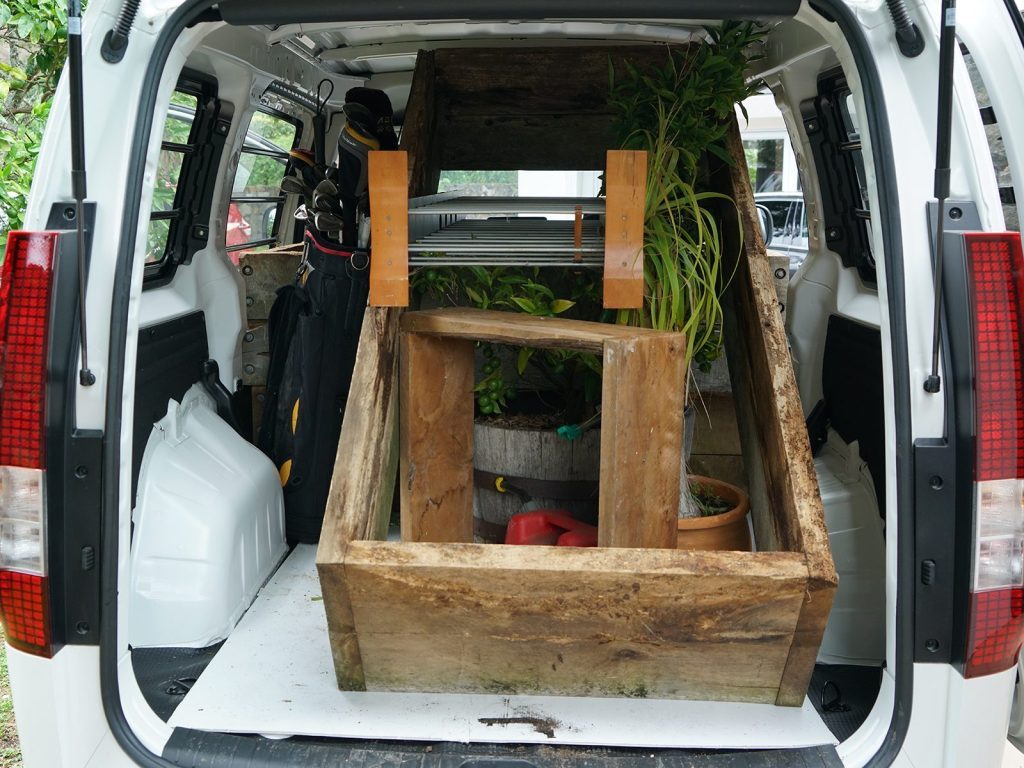
As to performance laden? The 2.2L 130kW/430Nm engine, the same as that in Santa Fe, hardly notices any of this. Staria Load can evidently haul braked trailers weighing up to 2500kg. And distance to empty is roughly 1000km with its 75L tank. It’s a great powertrain.
A couple of other points. This has simply wizard visibility with its big panoramic windows. There’s also a panel version if that works better. And the rear opening can be closed off with either barn doors or a single lift-up tailgate. Our’s had the latter and for most purposes I’d say go for this. Barn doors only get in the way when you’re loading or unloading, even if they open out 180 degrees or more.
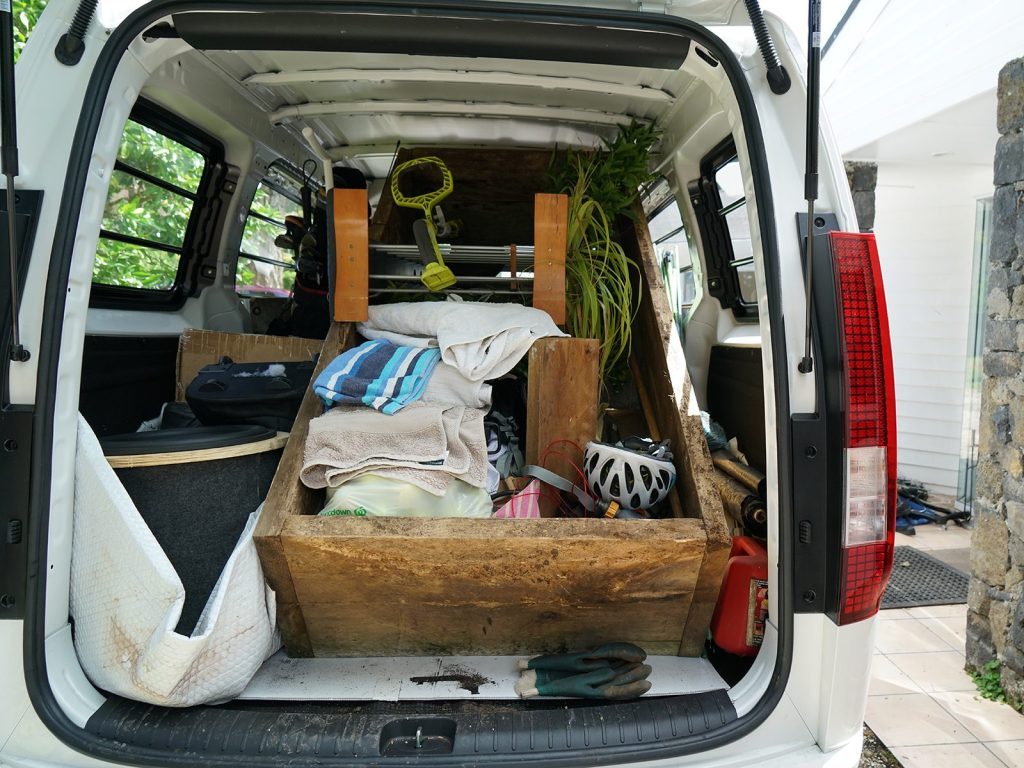
And we haven’t even mentioned the fit out of this thing; it has just about every safety feature you might expect in a car of this price, right down to seven airbags, one to prevent between-seats head clashes, blind spot monitoring, lane keeping, RCTA, surround view cameras, and active cruise with stop and go. For proof of safety effectiveness, the Staria Load auto has just been issued with a five-star ANCAP safety rating, the first commercial van to achieve this under the latest more stringent criteria.
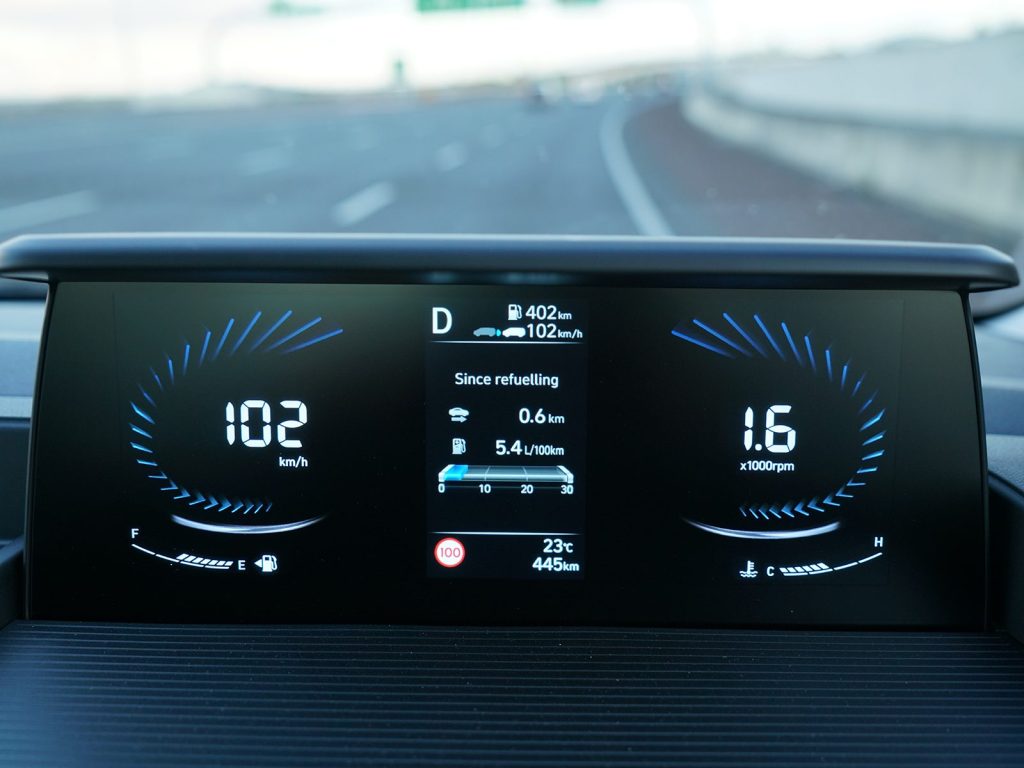
Other standard fit items include traffic sign recognition, always handy for white van drivers, a Qi smart phone charger, rubber lined bins for phones and the like, better than average seats and the easy entry and exit that’s mandatory for a delivery vehicle. You can buy this as a five-seat crew van too for an extra couple of grand.
Bottom line – if you don’t mind the quirky looks, this middle-sized delivery van is something else and well worth investigating.
